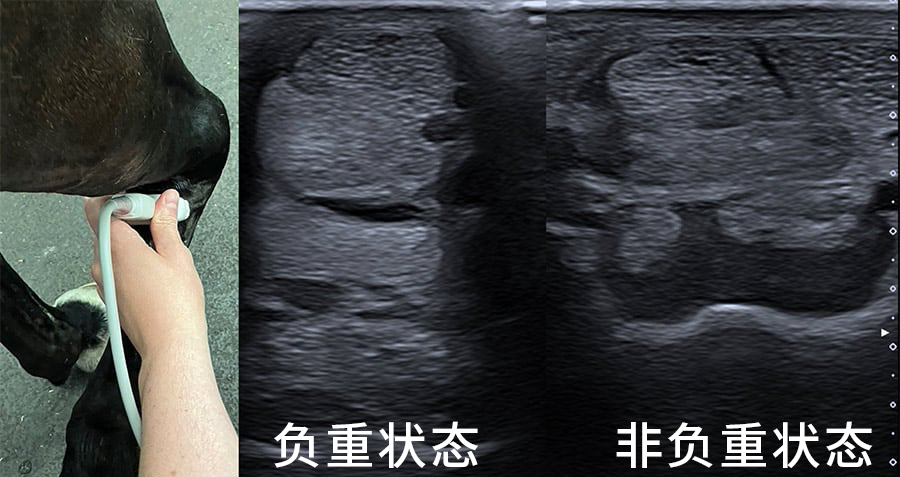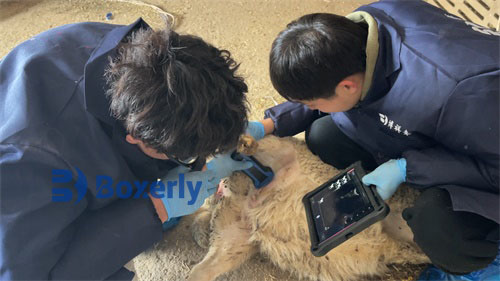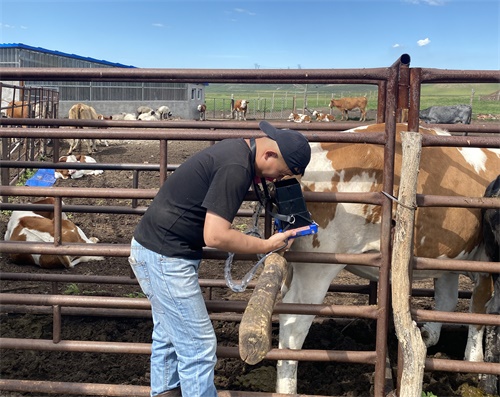Ultrasound is the primary imaging method used by veterinarians to evaluate the suspensory ligament of horses, which extends along the posterior part of the cannon bone and attaches to the sesamoid bone. Using a horse B-ultrasound machine to measure the hind legs of a horse, the probe cannot fully detect (the midline of the limb, at the back) to obtain an ideal field of view. The angle of the medial plantar (medial to the midline of the limb, posterior) allows veterinarians to observe the horse's legs well in the weight-bearing position.
B-ultrasound examination of horse suspensory ligament

Compared to other tendons, the suspensory ligament not only contains tendon fibers, but also fat and muscle tissue. In non load bearing images, it is easier to distinguish these tissues because veterinarians can easily adjust the angle of the probe, causing the tendon portion of the structure to become hypoechoic (black).
Therefore, consistency between ultrasound imaging of the horse ultrasound machine is important, as different techniques can result in significantly different readings.
The methods to improve the clarity of ultrasound detection images of horse suspensory ligaments include the following:
1. Optimize ultrasound equipment settings: Adjust the parameters of the ultrasound equipment, such as increasing gain, adjusting frequency and depth, to obtain clearer images. Ensure that the equipment is in optimal working condition and calibrate as needed.
2. Appropriate selection of ultrasound probes: Choose an ultrasound probe suitable for detecting suspensory ligaments, as higher frequency probes can usually provide clearer images. In addition, choose a probe of appropriate size to ensure better contact and resolution.
3. Correct scanning techniques: Train operators to use correct scanning techniques to ensure the correct position and angle of the probe and the area to be detected, in order to greatly improve image quality.
4. Optimize image post-processing: Use image processing software to perform post-processing on the acquired image, such as enhancing contrast, removing noise, etc., to improve the clarity and quality of the image.
5. Maintain good contact: Ensure sufficient contact between the ultrasound probe and the surface of the suspensory ligament, and use appropriate coupling agents to reduce signal attenuation and obtain clearer images.
6. Continuous training and quality control: Regularly conduct operator training to ensure that they master new technologies and best practices. At the same time, establish a quality control mechanism, regularly inspect equipment performance and image quality, and promptly identify and solve problems.
The combination of the above methods should significantly improve the image clarity of ultrasound detection of the suspensory ligament in horses, thereby enabling more accurate diagnosis and evaluation.








